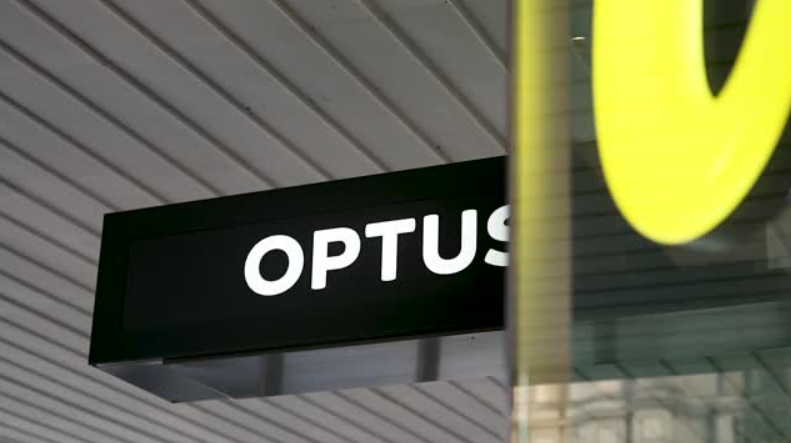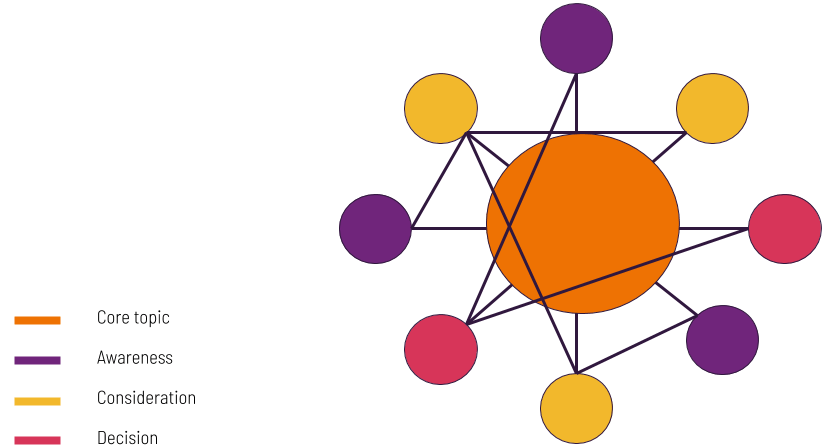How do you keep the customer at the heart of everything you do?
That’s what I’m exploring today with my very special guest Nassie Hajje, digital experience lead for the small business segment at Optus.
In my conversation with Nassie, we cover a wide range of topics including how to build a community, tools that will help you automate your marketing and why you can’t test for the sake of testing.
Nassie also reveals an awesome user testing hack that will get you in front of your audience and receive valuable feedback for only $40.
Nassie has had great success at Optus by keeping the customer at the heart of everything she does, which is a great lesson for any business owners starting their digital marketing journey.
So please enjoy this conversation with Nassie Hajje.
What you will learn in this episode

- Why you need to keep the customer at the heart of everything you do
- Why you don’t need big budgets to run a successful marketing campaign
- Why it’s important to engage with your audience in a way that is natural and native
- How to transition from offline to online marketing
- How to build a community
- How to get started creating a content hub for your business
- What it’s like working in a business with your wife or husband
- Nassie’s time management tips when working on multiple projects
- How Nassie optimized the Optus SMB marketing funnel to increase the number of conversions
- Why you need to know what success looks like
- Why you shouldn’t test for the sake of testing
- Why you don’t necessarily need large budgets to start usability testing (just buy $40 worth of coffee)
- Allowing your customers to share their stories in an authentic way, it will empower them to grow and connect with new customers
- Tools that will help you automate your marketing
- Why content marketing is like compound interest
Resources mentioned in this episode

Yes Business Content Community – Optus
Fern Lawyers
Metigy
Zoom
Optus Loop Live
Optimizely
Google Optimize
Tealeaf
Sydney Startup Hub
Pardot | Powerful B2B Marketing Automation by Salesforce
Infusionsoft by Keap
ADMA: Association for Data-driven Marketing and Advertising
Brené Brown: The power of vulnerability | TED Talk
Book Recommendation
Unwritten: Reinvent Tomorrow: Jack Delosa
What business would you build on Mars?

Hopefully, I would have known that I was heading on that flight and actually did my research on the needs of the Martians because it’s all about the customer. So a bit about me, I’ve got a Greek background, so, based on that, I know the way to someone’s heart is through the stomach, so Martians I’m assuming have stomachs and they can breathe and they need to eat, so I would say that we need a good restaurant on Mars, so I’m thinking Earth would be pretty intriguing to the Martians because they haven’t been there before, so we’ll have an Earth-themed restaurant.
And how would I market it? I guess, I’m assuming there’d be digital channels there, too, because that’s my stomping ground, so let’s assume that that’s available, and also something, some experiential marketing as well I think would be quite cool.
Get in touch with Nassie
Nassie Hajje on LinkedIn
Transcript
Brendan:
You’ve been in the marketing sector for a while now. How did you get started in marketing?
Nassie:
I’ve had a bit of varied experience, but I guess the way that I started my journey was when I was just about to finish my degree. I was in my last term and had been working for a project management company, doing recruitment admin, and the manager there at the time had a contact who had just started a social media startup, and they specialized in lead generation using social media networks within the B2B space, so there was an opportunity for me to join that team when they were still pretty small. I think it was maybe seven or eight people at the time, and, yeah, that was my stomping ground for a couple of years and got some exposure to some great brands within the B2B space, and I guess that was my first opportunity to really understand and see in action the power of digital and how that can drive, I guess, different relationships from an acquisition or a retention growth perspective as well.
Brendan:
I know that you put a lot of focus on creating relationships through digital marketing. When did you come to the realization that digital was going to have such a massive influence?
Nassie:
I guess I’ve been a little bit biased in my experience because I’ve been a huge advocate for digital all the way through and have brought that into all the organizations that I’ve worked with. I guess, you can just think of yourself as a customer, and there’s a lot of talk around being customer centric, but I think when you really do that and put yourself in the shoes of the customer and think of your own interactions, a lot of them are digital. You see the changes in the market and the demographics of those markets, and it’s really critical to be able to engage in a way that is natural and native to those audiences, so, while there’s definitely still a place for offline, I think it’s how can we merge those two channels and really create a collective experience that feels quite natural for that customer?
Brendan:
Are there any customers that you worked with in the early days that might have just been getting into digital marketing? There might be some people listening at home that are thinking of putting their toes in the digital marketing waters. Any examples or success stories that you can remember?
Nassie:
I can think of, even when I first went client side, it was within a payroll and learning company, so they were software-based, but, traditionally, marketing had been very offline events, sales-focused rather than a real digital push, and with my new manager at the time, we really, really pushed that digital component to complement the entire acquisition component and using tools like automation, social media, retargeting capability. They’re really powerful ways to be able to, just get in front of people at the right time, and I would say you don’t need huge budgets to do it, so, if there’s startups that are listening, it’s definitely not huge scale activities to be able to say this as a success, and I’ve definitely taken those learnings into my own startup as well and have been applying that.
Brendan:
Right, and what’s your own startup?
Nassie:
I’m a co-founder of a small law firm, so Fern Lawyers started about two years ago, and I’m pretty much preaching my own church in that business, so responsible for the growth plans and brand and all of that sort of stuff within Fern Lawyers, so my husband drives the fun stuff and I do all the marketing as well. Yeah.
Brendan:
Nice, and what’s it like working with your husband? I mean, it’s hard enough working with coworkers every day.
Nassie:
Yeah, I guess, it’s all about buy-in no matter where you are. Let’s put it that way. No. He’s fine. I guess, for him, it’s his full time gig, but, for me, it’s my side hustle, and, for me, it’s really exciting to see it grow from being, literally, just him to now. We’re just hiring our second employee, so it’s really growing, and I guess using digital and seeing more and more inquiries coming through those channels and, as we test and iterate our different versions of how we can engage, it’s starting to come through more and more and, because it’s from ground zero and seeing that come up, it’s been really great, and he’s open to experimenting with different channels, so that’s always good.
Brendan:
Oh, nice, and so we’ve talked about different channels. We’ve talked about tools. What kind of tools are you using at this earlier stage? I mean, any that stand out maybe under a hundred dollars as well? You mentioned that the early stage business people can get started at a fraction of the cost that they might have had to pay even 10 years ago.
Nassie:
Yeah, absolutely, so there’s a whole range of things. I guess, from a marketing perspective, there’s all sorts of scheduling tools and even like Metigy. I know we’re on the Metigy podcast, but if you’re looking at business tools more widely, there’s a couple of examples. One is around video conferencing, so Zoom is a really easy and affordable way to be able to stay in touch to save your clients to come in and meet with you, or, also, managing agencies from my perspective as well, and then Loop Live is another really good ones, so it’s having a landline on your mobile through an app, so Optus has that product, which is really good for, I guess, appearing very professional and having Auto Attendant functionality and appearing much bigger and more professional. Having that image as a small business I think is really good, and that’s about 35 bucks a month.
Brendan:
Oh, wow, I wish I knew about that when I had less small businesses. That’s amazing, and so you’re working at Optus now, that we’ll get to in a second, but you’ve got your side hustle, as you mentioned. Time management is something that all early-stage business owners struggle with. I mean, there’s so much to do. We’ve got the accounting. We’ve got the creative. We’ve got the marketing. Sometimes, I like to call it superhero syndrome because we think we can do everything, but how do you personally manage your time working on so many different moving parts?
Nassie:
For me, it’s all about prioritization, so it really comes down to that. I guess, what I like to do is map out a plan for a longer-term piece, so, say, over a 12-month period, this is my objective and, to be able to achieve that, I need to do X, Y, Z, and then I’ll space that out, knowing my own capacity, what I can deliver in a certain amount of time, so, for example, we’ve just re-launched our website, rather than saying doing it in a month if I was working in that full time, we did it over three months, and the objectives from a marketing perspective reflect that, and then that led us up to the commercial objectives in a way that’s going to be manageable rather than putting pressure on yourself and not getting the right outcome regardless.
Brendan:
Yeah. Cool, so you went from working with seven to eight people in your early career. Now, you’re working at Optus, one of Australia’s biggest telcos. How many employees at Optus altogether?
Nassie:
Oh, I’m not even sure. I think it’s about 5,000-ish.
Brendan:
Oh, wow.
Nassie:
Yeah, there’s a lot.
Brendan:
Yeah, and tell us about your team and what you’re doing at Optus.
Nassie:
Yeah, sure, so I’m the digital experience lead for the small business segment, and we are a team of eight and look after all of our digital properties for that segment, so we look after the business section of the Optus website. We manage our marketing automation capability, and we also have a content community called the Yes Business.
Brendan:
Great. I was going to say lots of stuff that I want to touch on here.
Nassie:
Yes, lots of stuff. There’s never two days the same. Let’s put it that way.
Brendan:
I mean, the last point that you mentioned, building a community, I mean, we’ve had many guests on that have put a lot of time and effort into building their community and, now, they’re seeing the rewards from that. What’s your journey been like building out this community for small businesses?
Nassie:
Oh, it definitely has been a journey, and I think, coming back to the objectives component, you’ve got to be really, I guess, clear on what the outcome is of those communities. For us, in the beginning, it was very much around engagement, very much around traffic and time on site and all of those sorts of things and creating content that’s not just around telco topics, but more so around what an actual business needs and then peppering our products and offerings into that conversation, so the first thing I would say is it’s all around the objectives again, so very clearly up front you know what success looks like.
Nassie:
Then, from there, it’s also keeping the customer at the heart of it, so it’s very easy to talk about ourselves and what we want to talk about, but we forget that a customer, in Yes Business’ case it’s small businesses across Australia, have 150 other things on their mind like, like you just mentioned now, so how can we actually help to solve those things and, rather than just be another vendor, be a real business partner to them?
Brendan:
What are some of the ways that you keep the customer at the heart of everything that you do?
Nassie:
One way that we try to do it within our team is through experimentation and test and learn, so every new, I guess, deliverable that comes out of our team, we run usability testing, focus groups, A/B testing online, and I guess the key thing with that is not just running tests and learn for the sake of it, not just running testing for the sake of it, but really taking those insights and turning them into actions, so how can we improve the experience for them and make sure that things like comprehension, discoverability, conversion? Also, just relevance as well is pretty fundamental because it may be really interesting to us, but it needs to be interesting to the customer and come back to them.
Brendan:
Yeah, so you mentioned testing, which is obviously important for every business. It’s something that the small and medium businesses don’t really get to till later on. How can they start implementing that earlier? Are there any tools that you guys use to help with testing?
Nassie:
I would say it’s really, really easy to get started. Start small as well, and you, again, don’t need huge budgets to be able to run experimentation. There’s tools within Google, Optimizely, TeaLeaf, all those sorts of platforms that can really help. We also have been in situations where we don’t have budget to run a usability testing and actually came here to the Startup Hub with a bunch of coffee coupons, spent maybe $40 on vouchers for coffees and just… We knew that there would be business owners, small business owners here in The Hub, so just approach people and, “Hey, do you have 15 minutes? We’d really love your feedback,” and you’d be surprised how susceptible people are and how happy they are to actually help you.
Brendan:
Yeah, that’s awesome. Go to where your customers are…
Nassie:
That’s it. Go to them.
Brendan:
… with some free coffee.
Nassie:
That’s right, we had a carrot.
Brendan:
Yeah, that sounds cool, and, speaking of the community, just wrapping up on that, are there any success stories that you can tell us of people that have come into the community, I guess, digested your content, and where are these guys now? Do you keep in touch with them? Are there any good case studies that you guys have?
Nassie:
Yeah, so we definitely have. Customer success stories are a key way for us to be able to close the loop in terms of our engagement, so there are customers within Optus that we are trying to support or partner with, and a key way to be able to do that I guess is through our community and having that, I guess, platform to be able to also promote their businesses across. An organization like Optus is quite a large scale, so what we did was look at the engagement that we were getting from the community and then look at, okay, what are the types of stories that customers are actually interested in and how can we actually help to build that out more, and the way that we’ve done that is actually getting our own customers engaged as part of the process and sharing their stories, so we hope that obviously has a flowing effect, and, like you said, stories are how people connect to each other, so, we don’t need to reinvent the wheel, but I think it’s just about keeping it simple and keeping it authentic in terms of what those stories are and how they can actually empower other businesses to grow and achieve whatever they want to achieve.
Brendan:
Yeah. I know you’ve definitely got some good success stories on the Yes Business website, and we’ll put all of the websites and resources that Nassie mentioned in the show notes today that you can find at metigy.com/podcast, so, circling back to automation now, another topic like testing that may get overlooked, and it can obviously save so much time in the long run, what have you guys done in terms of automation? I know you were working on your EDM since recently.
Nassie:
Yeah, absolutely, so we really try and use personalization wherever we can to try and optimize engagement and conversion through the funnel, so, at Optus, we use Pardot, which is part of the Salesforce stack, but, for other smaller organizations, there’s a whole range of capabilities out there. Infusionsoft I think is one for small businesses specifically. Also, HubSpot and platforms like that are quite good and help you scale, depending on what your activities look like, but what we’ve started doing is within… with Yes Business, when we first actually launched, content was all available, and then what we found was a challenge to translate into our next step in the funnel was to have that conversion point, so we shifted our user interface within Yes Business and flipped it so that there were a lot more opportunities for subscribers to actually register their interest so that we could have that longer conversation with customers.
Nassie:
Now, with that change, we’ve seen an opportunity to actually continue that conversation, so using EDM’s Push, depending on the data that we have to work with, but email for this type of engagement is generally pretty successful, and I guess the great thing about marketing automation is that you’re not just sending emails blind. It can actually trigger actions that go into your sales funnel. It can trigger something more specific to actually be sent to them based on their interest areas, and we can score all of that behavior so it then automates the actual analysis process and has a list of leads that are ready for the sales team to act on as well.
Brendan:
Nice, and, once you get those leads, they go to the sales team. What’s the next step on their lifecycle?
Nassie:
The next step would be we have a inside sales, so to speak, function, and, from there, the leads will get a call. They get qualified whether they’re the right fit, whether we’re able to help them, all of those qualifying B2B criteria, and then, from there, they then go into an opportunity management phase, and we’re really hoping to flesh out how automation can complement that and really go all the way through the funnel.
Brendan:
Yeah, awesome, and something that’s also impressive that I know you’ve worked on is the Yes Business site, so, having a massive content hub, so, obviously, content creation and content marketing is one of the most sustainable forms of marketing, the gift that keeps on giving like compound interest, I’ve heard it compared to.
Nassie:
I wouldn’t disagree with that.
Brendan:
Yeah, so, I mean, early-stage businesses starting out, it is a bit of an effort to go and create the content instead of just buying Google AdWords, for example, but much more sustainable. How do these guys get started in creating a content hub?
Nassie:
I think, again, just keep it simple. It comes back to those objectives. What do I want to achieve within a year or two years? Even if it’s a smaller business, I want to have a fully functional content hub, so, even if it’s one piece of content per week or two weeks or whatever that looks like, you can also re-cut and repurpose your content for a smaller bite-size pieces that can really help with the sustainability of content and the effort that that takes for actual creation. As well, I would say it’s absolutely valuable, the benefits span, not only for your actual website and building up your authority as a business on Google, it’s also how you can cut through and build that credibility.
Nassie:
I think, across almost all industries now, it’s intense competition, and you really need to have something different to be able to cut through, and if it’s AdWords as well, no, AdWords definitely serves its purpose, but I would say that, if it’s just on price, then it may be more challenging given the larger organizations that may also be beating for those terms, so, if you’re building that credibility and authority in a more organic way, A, you get on the top of search lists so that customers can actually find you and, B, it gives you an opportunity to actually engage through more channels than just Google using social media and repurposing it through different touchpoints through your EDM campaigns, et cetera.
Brendan:
Yeah, awesome, and what has you the most excited this year about marketing?
Nassie:
I’m going to give a really nerdy answer and go for AI. We use automation quite heavily, but I would really like to be more of an expert on how AI will actually be building on and complementing those capabilities that we already have. I think there’s so much opportunity all the way through the customer lifecycle, and really, really excited to see how that impacts us as marketers and how we can start to get even smarter with our communications in the market using that capability.
Brendan:
Yeah, definitely, and what are you personally struggling with the most at the moment? Are there any particular problems in your business black box that you’re looking to solve?
Nassie:
Yes, there is, so we’re trying to get really, really granular with our conversion funnels, so we want to be able to compare per digital asset what the conversion funnel looks like and then, within that, what the different sales channel’s conversion is of digital leads, so, as you can imagine, there’s a wealth of data there, but I think trying to get it all to talk to each other and cooperate is a bit of a challenge, so that’s something that we’re working through right now.
Brendan:
Nice, and, on a personal note now, Nassie, how did you learn marketing? I mean, you’re across so many different areas. We’ve talked about automation. We’ve talked about building out content. We’ve talked about funnels. Where do you learn how to learn?
Nassie:
I guess, I’ve been quite lucky that my experience has been really across the board from a digital perspective, so, yeah, I’m very grateful to have had the opportunity to get my sleeves rolled up in a lot of different areas. I guess, for me, it’s not a one-size-fits-all approach. I go and learn in a range of different areas.
Nassie:
When I initially started in digital marketing, I did a digital marketing certificate with ADMA just to understand the channels themselves and what was available. From there, I attend industry events, cross-industry events not only within marketing, but cross-industry, say, telco versus HR versus tech versus fin services to see what other organizations are actually doing, and then networking with people there and learning from other people.
Nassie:
If you can find role models that have achieved really amazing things within the digital space, then you can actually reach out to those people and try and get a coffee with them and ask really pointed questions about what they’re doing and try and take those learnings away, so, I guess, it’s about being proactive. There’s so much information out there, I think, and it’s about finding the stuff that’s going to be valuable, so, a lot of the time, it’s people who have been there and been through those experiences that have those really sharp insights that you can then take away as practical and actionable insights.
Brendan:
You’re a big reader as well?
Nassie:
I am.
Brendan:
Any marketing or business books you can recommend?
Nassie:
I’ve been watching a few TED Talks lately, so not a book that I’ll call out, but Brene Brown is a fantastic one. Her talk on vulnerability within the workplace I think is really inspiring. She just talks about authenticity and being real, and I think, when you bring that to everything that you do, it makes it a lot easier for the solutions to just come into place, so, again, coming back, I know I sound like a bit of a broken record about the objectives piece, if there’s this pressure on something working a certain way, and being able to maybe push back and say, “Actually, maybe it needs to be done like this,” and having that vulnerability and just saying, “Hey, this is what we need to do. This is how we move forward,” rather than being a little bit more resistant to it I think really helps.
Nassie:
Another business book that I really like is Jack Delosa’s Unwritten. I thought that was really good, and, especially as a startup, he’s built a really great organization that gives back to a lot of businesses.
Brendan:
Yeah, that’s The Entourage. Is it?
Nassie:
Correct. Yeah, so I quite liked his book, too.
Brendan:
Yeah. Nice. Thank you for so much value that you’ve dropped so far, Nassie. Everything that Nassie has mentioned, you can find in the show notes at metigy.com/podcast, and I just wanted to congratulate you for reaching the abstract question section of the podcast now, so we have two final questions. Are you ready to answer these?
Nassie:
Drum roll. I’m ready.
Brendan:
Yeah, so, the first question, if you could have a billboard, it could have text, visuals, anything that you want, where would you put it and what would it say?
Nassie:
Definitely visual because no one reads texts these days, so let’s go for visual. If I could put it anywhere? Where is somewhere big? Let’s go Times Square.
Brendan:
Times Square?
Nassie:
Let’s go somewhere big.
Brendan:
A lot of visibility?
Nassie:
Lots of visibility, and I guess just be kind.
Brendan:
Be kind?
Nassie:
Be kind.
Brendan:
I like it. It’s something that they need in New York as well.
Nassie:
I think we need to spread the love a little bit, so, I think, just something positive to put out in the world and especially somewhere as intense as New York, so why not?
Brendan:
I love it.
Nassie:
You put me on the spot, so there.
Brendan:
Good answer. Good answer, and the final question, Nassie, are you ready for launch?
Nassie:
Maybe.
Brendan:
Because you’re on the first flight to Mars with Elon Musk and the first settlers aboard the SpaceX Starship rocket, so what business do you start when you land on Mars, and how do you market it to the new Martians?
Nassie:
Hopefully, I would have known that I was heading on that flight and actually did my research on the needs of the Martians because it’s all about the customer, so a bit about me, I’ve got a Greek background, so, based on that, I know the way to someone’s heart is through the stomach, so Martians I’m assuming have stomachs and they can breathe and they need to eat, so I would say that we need a good restaurant on Mars, so I’m thinking Earth would be pretty intriguing to the Martians because they haven’t been there before, so we’ll have an Earth-themed restaurant.
Brendan:
Oh, nice.
Nassie:
How would I market it? I guess, I’m assuming there’d be digital channels there, too, because that’s my stomping ground, so let’s assume that that’s available, and also something, some experiential marketing as well I think would be quite cool.
Brendan:
Nice, and, most importantly, what type of dishes will they be serving from Earth?
Nassie:
Oh, they’ll bring the beautiful, minimalistic ones from all the fancy restaurants, certainly, with all the best food.
Brendan:
A bit of great food as well?
Nassie:
Got to have some great food. Can’t survive on Mars without it.
Brendan:
Nassie, thank you so much for coming in today, providing value to our audience.
Nassie:
It’s a pleasure.
Brendan:
You can find all of Nassie’s resources and tools at metigy.com/podcast, and, before we wrap up, Nassie, is there anything you’d like to say, and how can people get in touch?
Nassie:
No, just thank you for having me. I’m really happy to be here, and if there’s any questions or any help that I can provide to anybody listening, please feel free to reach out to me on LinkedIn and connect. I would be more than happy to spend time with anybody that’s interested.
Brendan:
Awesome. Thanks again, Nassie. It’s been fun.
Nassie:
Thank you. Cheers.[/et_pb_text][/et_pb_column]
[/et_pb_row]
[/et_pb_section]












